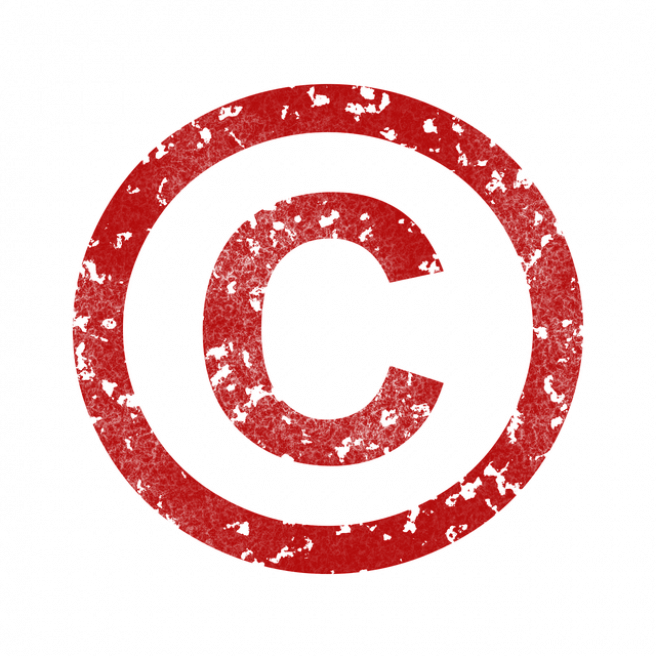A quick guide to copyright law for research and academic writing

Authors of research papers encounter copyright typically in only two situations. The first, and far more common, is signing the copyright form (in effect, giving the copyright to their manuscript to the journal’s publisher) as one of the last steps before the paper is published. The second, less common, is responding to the question from an editor about whether they have acquired the permission to reproduce any figures or tables that are part of the manuscript but have been taken from other published sources.
This article shows you how to handle both the situations and explains a few basic concepts related to copyright. Please bear in mind, however, that copyright is governed by law and, as with other legal matters, you should seek expert legal advice if the situation demands it or when the stakes are high.
That said, let me also tell you at the outset that simply because an image (a photo, a diagram, a graph, etc.) can be downloaded from a web page, it does not mean that it can be inserted into another publication even with proper attribution—if you do so, you may be violating copyright.
What is copyright as it relates to research papers?
Copyright is simply the right to copy, where “copy” refers to material such as text, images, etc. produced by a creator. This is hardly an illuminating explanation, but it does help to make one thing clear, namely, that copyright is all about the expression of an idea rather than the idea itself. For example, take the methods section of a research paper, in which you describe a standard procedure, say that of estimating the iron content in a water sample.
Now the procedure itself may be patented but cannot be copyrighted; on the other hand, the exact words in which you describe that procedure is protected by copyright. This is why copyright applies to text, images, drawings, paintings, audio and video recordings, and so on but not to the ideas conveyed by those words or images or sounds.
Now, what prevents someone from taking your description of that iron-estimation method, for instance, and incorporating that, word for word, in another paper they are writing? Or what is to prevent another journal from re-publishing your entire paper with you as its author but without your consent or knowledge?
The first instance is plagiarism (claiming some text as your own when it is not—but that is a topic for another article). The second is infringement of copyright, because although the journal printed the paper with the original author’s name, the journal had no right to publish it in the first place unless permitted to do so by whosoever held the copyright to that paper.
Fair use
Let us consider the second situation mentioned in the opening paragraph: you are writing a research paper and would like to reproduce, word for word, a definition given by another author. You are doing so for the purpose of commenting on that definition. So long as you put that definition within quotation marks and cite the original paper as a source, you cannot be accused of plagiarism—nor, in nearly all cases, of infringing the copyright. Why? That is where the principle of fair use comes in, which simply exempts such use—in other words, you do not need to obtain the copyright holder’s permission – so long as it is used for criticism or commentary or scholarly purposes and is not used for commercial ends and constitutes only a small proportion of the total text of which the extract is part. Therefore, be wary of any advice that mentions only the length, as in “up to 250 words, not a problem.”
Versions of copyright, or types of licence for use
Scholarly publishing has its special situations and conditions largely because it is not pursued for profit—at least not by most authors, readers, researchers, and scholars. One consideration is that most research—and research papers are its tangible product—is publicly funded or funded by not-for-profit entities such as foundations and charities. The following types of licences are common in scholarly publishing:
- Licence to publish
- Creative Commons Attribution License (CC-BY 4.0)
- Creative Commons Attribution-NonCommercial License (CC BY-NC 4.0)
- Creative Commons Attribution-NonCommercial-NoDerivs License (CC BY-NC-ND)
Licence to publish: The licence to publish is the most restrictive and is governed by the usual copyright restrictions. It is commonly adopted by traditional subscription journals, which require authors to transfer the ownership of their copyright to the journal.
Creative Commons Attribution License (CC-BY 4.0): BY refers to byline (whenever the text is used, it must be attributed to its original author).
Creative Commons Attribution-NonCommercial License (CC BY-NC 4.0): In addition to the requirement that the author be mentioned, the proposed work that incorporates the text in question must be for non-commercial uses.
Creative Commons Attribution-NonCommercial-NoDerivs License (CC BY-NC-ND): Here one more condition is introduced, namely, that the work may not be modified in any way (the ND is short for “no derivatives”). Most “open access” journals use one of these more liberal licenses, with the author retaining the copyright.
Action points for researchers
Now that you have some idea of what copyright is and how it affects you, the following reminders may be useful.
- Read the copyright agreement carefully before signing it: remember that you handing over the rights to use the data, information, and knowledge that are outcomes of public funding in most cases.
- Check whether the terms of funding dictate particular types of licence or oblige you to publish your findings only in open-access journals.
- Inform those whose work you have used: “fair use” may allow you to use the work of others without obtaining their formal permission, but it is always good to let them know that you are doing so before your paper is published
- Remember that copyright typically covers text, images, recordings, and so on—not physical products such as prototypes or processes or chemical compounds, which are governed by other laws related to intellectual property; seek competent legal advice in these matters.
- Lastly, read up to know more about copyright, licences, and other matters related to intellectual property because as a researcher, you are the creator of such property.









